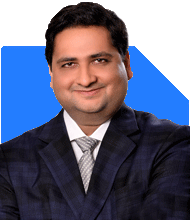I am 55 .my total savings value stands to 10lakh today include 4.5 lakh in ppf, 2 lakh in post office monthly income, around 20k in mutual fund ,i do 500 sip every month since last 2 yrs and have 5k in sbi mutual fund ( this amout is included in mutual fund) and and 2.5 fd and recurring.all these years could not save as could not meet expenses, am earning through teaching and have irregualr income as not teaching in school.where to invest particularly to make it 50 lakh in next years..is it possible..at the moment i can invest 25k monthly as earniing fairly good.dont know about future .no ancestral property or share
Ans: Current Financial Situation
You have accumulated Rs 10 lakh in savings. This includes Rs 4.5 lakh in a Public Provident Fund (PPF), Rs 2 lakh in a Post Office Monthly Income Scheme (POMIS), Rs 20,000 in mutual funds (including a Systematic Investment Plan (SIP) of Rs 500 per month for the past two years), Rs 5,000 in SBI Mutual Fund, and Rs 2.5 lakh in Fixed Deposits (FD) and recurring deposits. You are earning through teaching, which provides an irregular income. Currently, you can invest Rs 25,000 monthly. Let's explore how you can grow your savings to Rs 50 lakh in the next 10 years.
Investment Goals and Time Horizon
Setting clear financial goals is the first step towards achieving them. Your goal is to reach Rs 50 lakh in 10 years. This is a significant goal, but with disciplined investing and the right strategy, it is achievable. Given your current savings and potential to invest Rs 25,000 monthly, let's outline a plan.
Public Provident Fund (PPF)
The PPF is a safe, government-backed savings scheme with attractive tax benefits. Your existing Rs 4.5 lakh in PPF will continue to grow with compounding interest. It’s a long-term investment, ideal for retirement planning.
Since the PPF has a lock-in period of 15 years, it aligns well with your 10-year goal. The current interest rate on PPF is around 7.1% per annum. Regular contributions can be made up to Rs 1.5 lakh per year to maximize the benefit.
Post Office Monthly Income Scheme (POMIS)
POMIS is another safe investment, providing regular monthly income. However, the interest earned is relatively low compared to other investment options. Given your goal, you might want to consider redirecting the funds from POMIS to higher-yielding investments.
Mutual Funds
Mutual funds are excellent for wealth creation over the long term. With Rs 20,000 currently in mutual funds and Rs 500 SIP per month, you already have a start.
Considering your goal, increasing your SIP amount can significantly impact your corpus. Equity mutual funds, which invest in stocks, offer higher returns compared to debt funds but come with higher risk. However, for a 10-year horizon, equity funds are suitable due to their potential for higher returns.
Fixed Deposits and Recurring Deposits
FDs and recurring deposits provide guaranteed returns but at lower interest rates. Given the inflation rate, these may not be the best instruments for aggressive growth. You have Rs 2.5 lakh in FDs and recurring deposits, which can be partly shifted to higher-return investments.
Creating a Balanced Investment Portfolio
To reach your Rs 50 lakh goal, a balanced portfolio with a mix of equity and debt is essential. Here’s how you can allocate your investments:
Equity Mutual Funds
Equity mutual funds should form the core of your portfolio. Given the long-term horizon, you can take advantage of the higher returns from equity investments. Diversify across large-cap, mid-cap, and small-cap funds to spread the risk. Increasing your SIP amount from Rs 500 to Rs 25,000 monthly can significantly boost your corpus.
Debt Mutual Funds
Debt mutual funds provide stability to your portfolio. These funds invest in bonds and other fixed-income securities. They are less volatile than equity funds and offer moderate returns. A portion of your monthly investment can go into debt funds to balance the risk.
Hybrid Funds
Hybrid funds invest in both equity and debt, providing a balanced approach. They offer the growth potential of equities and the stability of debt. Allocating a part of your investment to hybrid funds can provide a good risk-return balance.
Systematic Transfer Plan (STP)
An STP allows you to transfer a fixed amount from a debt fund to an equity fund regularly. This strategy helps in averaging the purchase cost and managing market volatility. You can park a lump sum in a debt fund and systematically transfer it to an equity fund.
Evaluating Risks and Returns
Investing in mutual funds, especially equity funds, involves market risk. However, the risk is mitigated over a longer investment horizon. Historically, equity markets have delivered around 12-15% annual returns over the long term.
Debt funds offer lower returns (around 6-8%) but provide stability. The goal is to create a mix that aligns with your risk tolerance and return expectations.
Benefits of Actively Managed Funds
Actively managed funds involve professional fund managers making investment decisions. These managers aim to outperform the market indices by selecting high-performing stocks. Although they come with higher expense ratios, the potential for higher returns justifies the cost.
Systematic Investment Plan (SIP)
SIP is a disciplined investment approach, allowing you to invest a fixed amount regularly. It averages out the cost of investment and reduces the impact of market volatility. Increasing your SIP amount to Rs 25,000 monthly can accelerate your journey towards the Rs 50 lakh goal.
Disadvantages of Index Funds
Index funds passively track market indices and aim to replicate their performance. While they have lower expense ratios, they cannot outperform the market. Actively managed funds, on the other hand, have the potential to generate higher returns through strategic stock selection.
Importance of Regular Funds
Investing through a Mutual Fund Distributor (MFD) with a Certified Financial Planner (CFP) credential provides professional guidance. Regular funds involve a slightly higher expense ratio but offer personalized advice, portfolio review, and rebalancing services.
Monitoring and Reviewing Investments
Regular monitoring and reviewing of your investments are crucial. Market conditions, personal financial situations, and investment goals can change. A periodic review with a CFP ensures that your portfolio remains aligned with your goals.
Emergency Fund
While focusing on investments, it is essential to maintain an emergency fund. This fund should cover 6-12 months of your living expenses. It provides a financial cushion in case of unexpected events and prevents the need to dip into your long-term investments.
Tax Planning
Effective tax planning enhances your returns. Utilize tax-saving instruments under Section 80C, such as PPF and Equity-Linked Savings Scheme (ELSS) funds. ELSS funds have a lock-in period of three years and offer tax benefits along with equity exposure.
Retirement Planning
Given your age, retirement planning is crucial. The investments should cater to your retirement needs. PPF and EPF are excellent retirement planning tools. Supplement them with a diversified mutual fund portfolio to ensure a comfortable retirement.
Setting Realistic Expectations
Achieving Rs 50 lakh in 10 years requires disciplined investing and realistic expectations. While equity investments can offer high returns, they come with risks. Diversification across asset classes balances risk and maximizes returns.
Investing in Knowledge
Understanding financial markets and investment principles empowers you to make informed decisions. Attend financial literacy programs and stay updated with market trends. Knowledge is a powerful tool in achieving your financial goals.
Conclusion
Reaching your goal of Rs 50 lakh in 10 years is achievable with a strategic investment approach. Focus on a balanced portfolio with a mix of equity and debt. Increase your SIP contributions and leverage the benefits of actively managed funds. Regularly monitor and review your investments with the help of a Certified Financial Planner. Stay disciplined and informed to navigate the financial markets effectively.
Best Regards,
K. Ramalingam, MBA, CFP,
Chief Financial Planner,
www.holisticinvestment.in

























